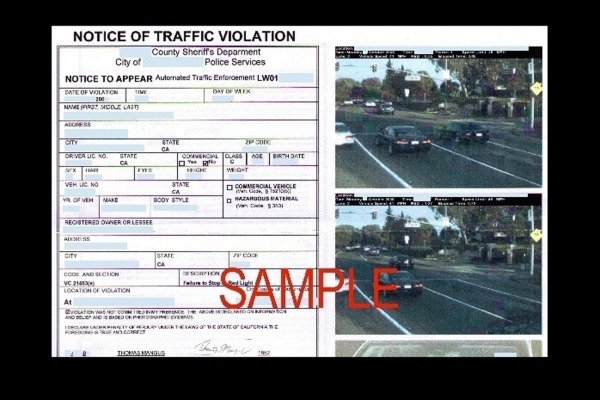
Despite increasingly vocal public outcry, red-light cameras have become an integral part of traffic safety enforcement in hundreds of U.S. cities and towns. At last count, close to 700 of them had installed red-light cameras, according to an October 2011 report from U.S. PIRG, a consumer research and advocacy group.
If red-light cameras have popped up in your area, apart from obeying the law, here are some other steps you can take to prevent a ticket, and tips on what to do if you get one.
1. Find out if there are red-light cameras in your area. The Insurance Institute for Highway Safety maintains an interactive database of states with red-light and speed cameras. Click on a state in the map to see whether cameras are installed statewide or in specific communities, what photographs they take (driver, tag, etc.), and what penalties are involved for red-light camera tickets. If your city or state has red-light cameras at intersections, you can find out more about them on the transportation section of the appropriate government agency's Web site.
2. Avoid rolling stops on right turns. In some cities, illegal right turns — mainly rolling stops — account for more than 90 percent of tickets issued by red-light cameras, says Phineas Baxandall, a U.S. PIRG senior analyst and program director, and co-author of the group's red-light camera study. Here's how to prevent a rolling-stop ticket: When you get to an intersection, stop behind the limit line before moving forward to check oncoming traffic. Then either proceed or stop again to wait for traffic to clear before turning right, Baxandall says.
3. Track red-light cameras as you drive. A cottage industry is selling products to help drivers circumvent being caught by red-light cameras. Among the newest products are red-light camera detector apps such as Trapster (which actually is a free app) that can be downloaded to a smartphone or a car's GPS. The crowd-sourced apps depend on drivers to report the red-light cameras they see. When the next motorists who use the device approach an intersection, the app emits an audible warning. But buyers should beware: There are mixed reactions to the apps from some purchasers who've left comments about the products on online app stores. Even motorists rights' groups don't advocate using them.
"They're only as good as the quality of the information that's being given," says John Bowman, communications director for the National Motorists Association, a Waunakee, Wisconsin, driver's rights group.
4. Fight the ticket. Legal gray areas surrounding traffic safety laws in some states have spawned companies that sell red-light camera defense kits. For example, California drivers can contact a company called TicketKick with details of their red-light camera ticket and get a customized written defense they can mail into the court, as well as sample forms and other documents.
TicketKick previously handled cases exclusively via e-mail or phone, but in late 2011, it opened two locations in Southern California. TicketKick also recently beefed up its legal staff by hiring an attorney who formerly prosecuted traffic tickets. The National Motorists Association provides people who pay its $35 annual membership fee with an e-book called Fight That Ticket, a CD and one-on-one phone or e-mail consultations. The organization also puts people in touch with local activist groups.
Popular tips that include would-be red-light-camera busters like sprays and slip-on plastic shields which purportedly prevent a car's license plate from being picked up by a red-light camera offer mixed results, based on comments left on online consumer forums. While sites such as Amazon stock the products, it doesn't mean they're legal to use. PhantomPlate, a Harrisburg, Pennsylvania, company that's been around since 1996, cautions drivers to check state and local laws before using its PhotoBlocker sprays and PhotoCover shields.